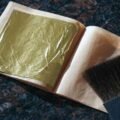
Clothes moths, those tiny, elusive pests, have a notorious reputation for wreaking havoc on our beloved garments. From cherished vintage dresses to expensive woolen suits, no fabric is truly safe from their destructive larvae. While there are various methods to combat these pests once they’ve settled in, as the old adage goes, “prevention is better than cure.” One of the most effective preventive measures is the integration of moth traps into your wardrobe care routine. Here’s how and why you should make moth traps a staple in your clothing care arsenal and provide you information on how to keep moths away.
Understanding the Enemy: Clothes Moths
Before diving into prevention, it’s essential to understand the enemy. Clothes moths, particularly the larvae, feed on organic fibers like wool, silk, fur, and even cotton when it’s blended with other materials. They’re attracted to dirt, sweat, and oils, which means that even seemingly clean clothes can be at risk
The Role of Moth Traps
Moth traps, often infused with pheromones, are designed to attract and trap adult moths, preventing them from reproducing and laying eggs. By breaking the breeding cycle, these traps play a crucial role in moth population control.
Different Types of Moth Traps
Discuss the various kinds of moth traps available in the market. Highlight the differences between pheromone traps, sticky traps, and ultraviolet light traps. This section can help readers make an informed choice based on their specific needs.
Recognizing the Signs of an Infestation
Before even setting up traps, it’s vital to recognize if there’s an existing problem. Discuss signs like visible larvae, webbing, or the adult moths themselves. Highlight the importance of addressing any infestation promptly.
The Cost of Neglect: Impact of Moth Damage
Detail the potential financial and emotional cost of neglecting a moth problem. Discuss how valuable garments can be ruined and the potential expense of replacing high-quality clothing items.
Integrating Moth Traps: A Step-by-Step Guide
Assess and Clean: Before introducing moth traps, ensure your wardrobe and garments are clean. Vacuum the closet, wash or dry-clean clothes, and ensure there’s no existing moth infestation.
Choose Quality Traps: Not all moth traps are created equal. Opt for pheromone-infused traps, which attract moths more effectively. These are non-toxic and safe for homes with pets and children.
Strategic Placement: Place the traps in areas where you’ve previously noticed moths or in spaces with natural fibers. Ensure they’re away from direct light, as moths are typically drawn to darker, quieter spots.
Regular Monitoring: Check the traps every few weeks. A sudden increase in trapped moths can indicate a growing problem, necessitating further action.
Replacement: Moth traps lose their effectiveness over time. Replace them every 2-3 months, or sooner if they become full.
Complementing Moth Traps with Other Preventive Measures
While moth traps are effective, they’re even more potent when combined with other preventive strategies:
Regular Cleaning: Moths are less attracted to clean clothes. Regularly wash or dry-clean garments, especially before long-term storage.
Proper Storage: Use airtight containers or garment bags for clothes, especially if they’re not frequently worn. Cedar balls or lavender sachets can add an extra layer of protection, repelling moths with their scent.
Maintain Airflow: Moths thrive in stagnant, humid environments. Ensure your wardrobe or storage area has good airflow, and consider using a dehumidifier in damp climates.
Routine Inspections: Periodically inspect your clothes, especially those you don’t wear often. Look for tiny holes, larvae, or web-like cocoons. Early detection can prevent a full-blown infestation.
Environmental and Safety Considerations
Address any environmental concerns related to moth traps. Discuss the biodegradability of traps and the safety of pheromones for humans and pets. Emphasize the non-toxic nature of most modern traps compared to older methods like mothballs.
The Benefits of a Moth-Free Wardrobe
Longevity of Clothes: Protecting your garments from moths ensures they last longer, offering better value for money and reducing the need for frequent replacements.
Preservation of Sentimental Items: Many of us have heirloom garments or pieces with sentimental value. Moth traps help safeguard these irreplaceable items.
Economic Savings: Replacing moth-eaten clothes can be expensive. Investing in preventive measures like moth traps is cost-effective in the long run.
Peace of Mind: There’s a certain peace that comes with knowing your cherished garments are safe from destructive pests.
Conclusion
In the battle against clothes moths, proactive measures trump reactive solutions. By integrating moth traps into your wardrobe care routine and complementing them with other preventive strategies, you not only protect your garments but also ensure they remain in pristine condition for years to come. After all, in the world of wardrobe care, prevention truly is better than cure.

